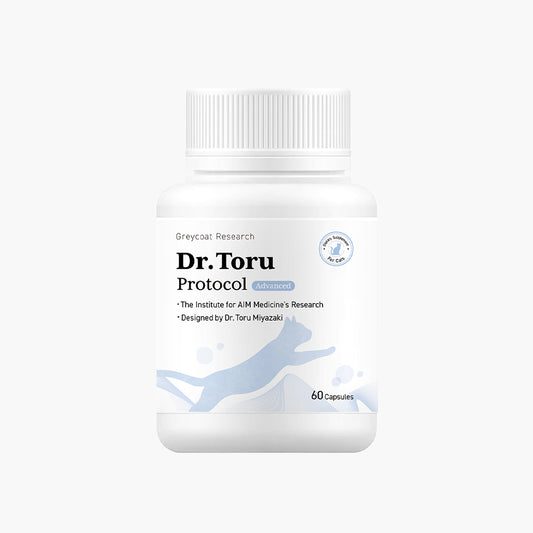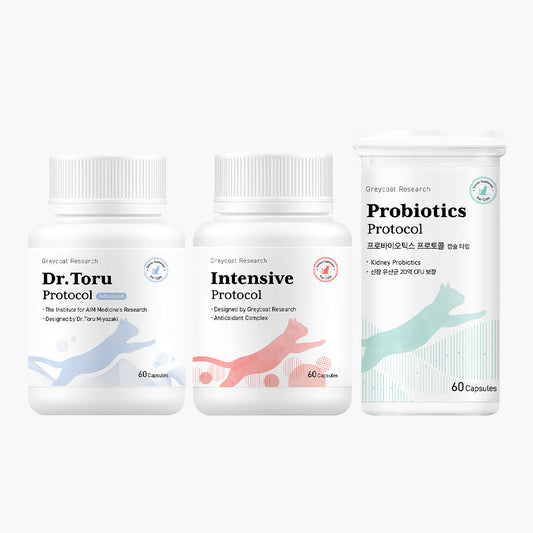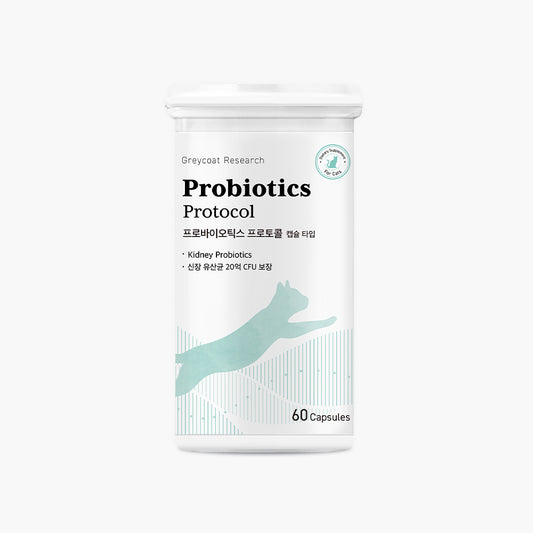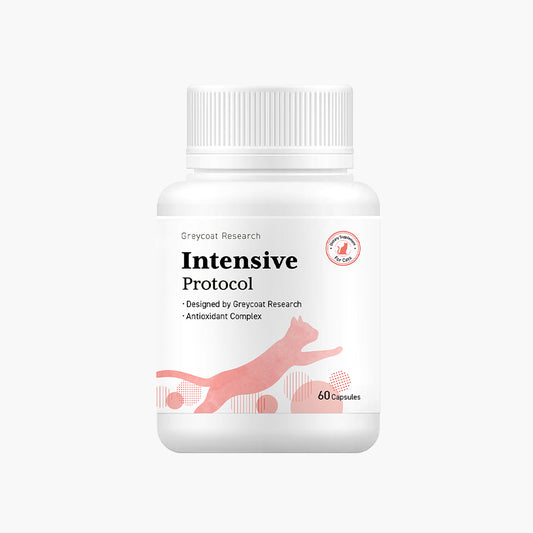
After stage 3 kidney disease, phosphorus levels in cats can suddenly spike.
Lab results that were previously stable can worsen noticeably in just a month or two, leaving many cat owners shocked and confused. A sudden rise in phosphorus (P) levels can be a sign that the cat's kidney disease is rapidly progressing.
Kidney disease in cats worsens gradually over time. One of the most important accelerators of kidney damage is hyperphosphatemia (elevated blood phosphorus levels). High phosphorus can lead to secondary hyperparathyroidism, appetite loss, vomiting, and further kidney decline.
Consistently managing your cat’s phosphorus levels can slow the progression of kidney disease and greatly improve their quality of life.
Greycoat Research: Data-Backed Care for Kidney Cats
Since 2024, Greycoat Research has provided over 1,000 kidney care consultations for cats with stage 2 to 3 kidney disease worldwide. Our approach is based on real-world caregiver data and guided by expert insights:
- Supplement consultations based on research by Dr. Toru Miyazaki of the Institute for AIM Medicine
- Practical guidance from Dr. Kim Jae-young, caregiver of Korea’s oldest cat (Minky, age 28)
- Clinical insights from Dr. Motoo Kobayashi, with 30 years of experience in feline kidney care
- Supplement and fluid therapy tips from clinical pharmacy expert Dr. Alex Shin
When Should You Start Using Phosphorus Binders?
Bloodwork Thresholds and Timing
Normal phosphorus levels in cats are typically considered to be between 2.7 and 6.2 mg/dL. Many cat owners only start considering binders once phosphorus exceeds this range, but early intervention is often more effective.
For most cats with stage 2 kidney disease, phosphorus binders may not be necessary. But from stage 3 onward, phosphorus levels often begin to climb rapidly, making it an important time to consider starting binders.
You can talk to your vet about starting phosphorus binders if:
- Your cat's phosphorus levels exceed the normal range
- Your cat's phosphorus levels are still within range but show a consistent upward trend
In other words, you should consider phosphorus binders as soon as levels begin to rise, not just when they cross the upper threshold. Because kidney disease is progressive, early intervention helps stabilize your cat's condition more effectively.
The 3 Main Phosphorus Binders for Cats with Kidney Disease
Sevelamer, Fosrenol, and Aluminum Hydroxide

TT, a cat with stage 2 kidney disease
Phosphorus binders used in feline kidney disease generally fall into three main categories. Each has different properties and administration methods.
-
Sevelamer
- A non-calcium, non-metal phosphorus binder
- Generally safe for long-term use
- May occasionally cause digestive discomfort
- Available in powder or tablet form
-
Fosrenol (Lanthanum carbonate)
- Strong phosphorus-binding capacity
- Minimal systemic absorption, considered safe
- Has a metallic taste, so some cats may reject it
- Tablets can be crushed and given as powder
-
Aluminum Hydroxide
- Very effective phosphorus-binding ability
- Usually comes in liquid form, which can be harder to administer
- Should not be used long term due to risk of aluminum accumulation → Long-term use may cause confusion, tremors, appetite loss, vomiting, or constipation
Combining Phosphorus Binders for Better Effect
Why Sevelamer + Fosrenol Is Often Recommended
Depending on your cat’s condition, one binder may be enough, but using two together can often be more effective.
Sevelamer and Fosrenol are both suitable for long-term use and can serve as base treatments. Because they work differently, using both together may offer more stable phosphorus control.
- Sevelamer binds phosphorus in the intestines to block absorption.
- Fosrenol physically grabs onto phosphorus to carry it out of the body.
Because their mechanisms differ, this combination can better stabilize phosphorus levels. If levels continue to rise despite one binder, consider combining both—or adding aluminum hydroxide temporarily under veterinary guidance.

General, a cat with stage 4 kidney disease
This strategy is widely used in clinical settings. At Greycoat Research, a stage 4 kidney disease cat named General responded well to this method. Initially treated with Fosrenol alone, General began to show rising phosphorus levels. After Sevelamer was added in consultation with a vet, levels stabilized.
If your cat's phosphorus remains difficult to control, discuss combination binder therapy with your vet. It can be an effective solution—but dosage and timing must always follow veterinary direction.
Why Calcium-Based Binders Are Risky
The Link with AIM Protein
Phosphorus binders that contain calcium (e.g., calcium carbonate) can raise blood calcium levels, which may interfere with AIM protein activity—a key factor in kidney health.
According to Dr. Toru Miyazaki at Japan's Institute for AIM Medicine, the AIM protein plays a key role in clearing waste from the kidneys. But when blood calcium levels are high, AIM activity can be disrupted, potentially worsening kidney inflammation.
That’s why non-calcium phosphorus binders are generally considered the safer choice for cats with kidney disease.
Tips for Giving Phosphorus Binders
Reduce GI Side Effects and Improve Palatability

A cat eating food
-
Don’t give binders on an empty stomach
→ Giving phosphorus binders alone or on an empty stomach may cause vomiting -
Mix with palatable renal wet food
→ Mixing powdered binders into flavorful renal wet food can improve palatability and reduce refusal -
Use a syringe if needed
→ If your cat won’t eat on their own, mix the binder with food and use a syringe to feed slowly
Phosphorus binders aren’t just for lowering numbers.
They are a silent line of defense that slows the invisible damage of kidney disease.
A small choice made during each meal can help your cat live more comfortably and for longer.
Want to know the right care strategy for your cat?
Contact Greycoat Research for a free 1:1 consultation today.




